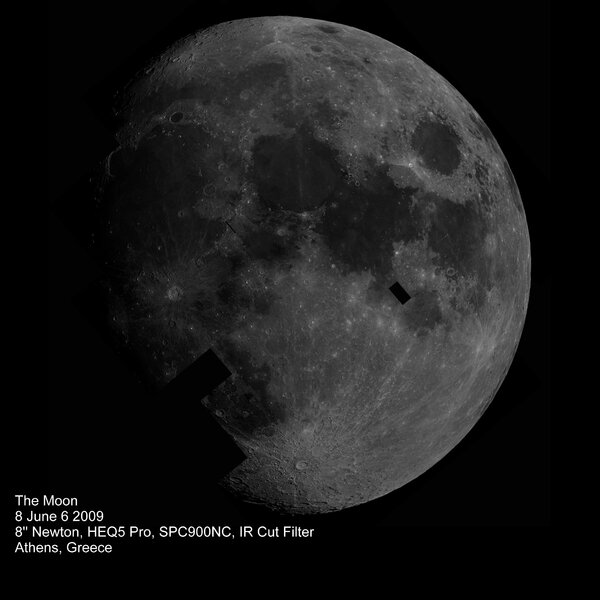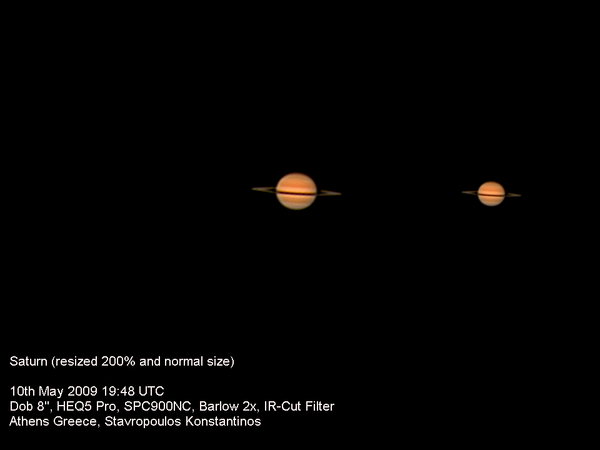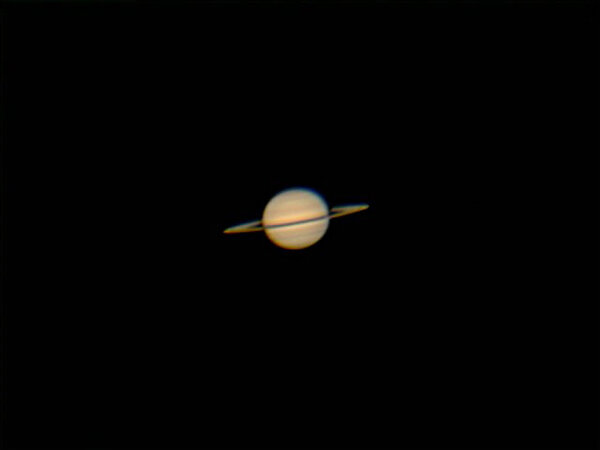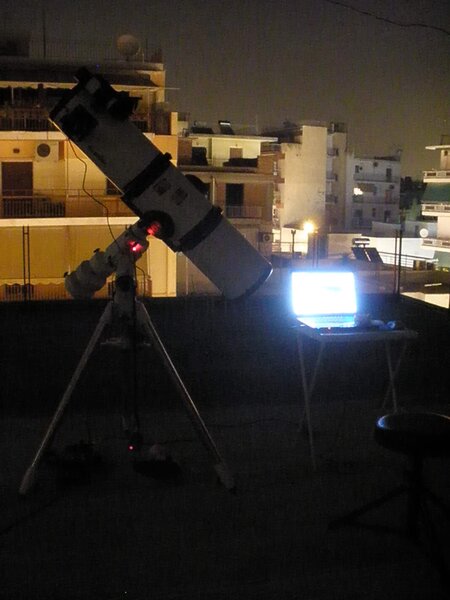-
Αναρτήσεις
2394 -
Εντάχθηκε
-
Τελευταία επίσκεψη
-
Ημέρες που κέρδισε
1
Τύπος περιεχομένου
Forum
Λήψεις
Ιστολόγια
Αστροημερολόγιο
Άρθρα
Αστροφωτογραφίες
Store
Αγγελίες
Όλα αναρτήθηκαν από kookoo_gr
-
-
μιας και μετακομισα κεφαλονια, θα ηθελα να ρωτησω αν υπαρχει κανεις ερασιτεχνης στην κεφαλονια.
-
σου εστειλα ενα πμ με καποιες πληροφοριες δες το
-

AstroVox T-shirt: Νέα εκτύπωση!
kookoo_gr απάντησε στην συζήτηση του/της astrovox σε Λοιπές Αστρονομικές Συζητήσεις
θα υπαρξει ανακοινωση οταν ειναι ετοιμα; -

Θα ήθελα βοήθεια με το τηλεσκόπιο
kookoo_gr απάντησε στην συζήτηση του/της ariavl σε Η γωνιά των νέων αστροπαρατηρητών
το πλανηταριο εχει ενα πανακι και ειδικο σπρεϊ της baader για το καθαρισμα προσοφθαλμιων. συνολικα η τιμη τους πρεπι να ειναι γυρω στα 30 ευρω. πριν πας ομως να τα αγορασεις δες πρωτα με το ματι σου αν το γυαλι του προσοφθαλμιου ειναι καθαρο απο δακτυλικα αποτυμωματα βρωμιες ή θολουρες. αν ειναι λερωμενα απλα τα καθαριζεις με αυτο το καθαριστικο. ενα οι ρυθμισεις των οπτικων ειναι σωστες τοτε οταν θα εστιαζεις και απεστιαζεις απο ενα αστερι θα βλεπεις οτι δειχνει το πρωτο βιντεακι στο δευτερο βιντεακι φαινοντε οι ομοκεντροι κυκλοι που ολοι λενε οτι πρεπει να βλεπεις οταν ειναι σωστα ευθυγραμισμενα τα οπτικα. για να δεις αυτους του κυκλους θα πρεπει να εχεις ενα αστερι στον εστιαστη και κατα προτιμηση με ενα προσοφθαλμιο με μικρη εστιακη αποσταση πχ 8μμ 9μμ 10μμ για να εχεις οσο πιο μεγαλη μεγεθυνση μπορεις. τοτε θα πρεπει να παιξεις με τον εστιαστη ωστε στην αρχη να εχεις οσο πιο καλο focus εχεις και αφου βλεπεις το αστερι οσο πιο δυνατον καθαρο τοτε απεστιαζεις ελαφρα και θα δεις τους ομοκεντρους κυκλους http://www.youtube.com/watch?v=af-y2G0RWz0 -

Θα ήθελα βοήθεια με το τηλεσκόπιο
kookoo_gr απάντησε στην συζήτηση του/της ariavl σε Η γωνιά των νέων αστροπαρατηρητών
μια μικρη βοηθεια ανοιξε το manual για τις eq1 απο την skywatcher http://www.skywatchertelescope.net/swtinc/customer_support.php?id=72&class1=1&class2=130 εκει θα δεις αρκετα να σε βοηθησουν σαν αρχη για την βαση και το τηλεσκοπιο που εχει τα ιδια χαρακτηριστικα με αυτο που δινει η skywatcher. η πολικη ευθυγραμμιση εχει να κανει οταν θες το τηλεσκοπιο να ακολουθει τον στοχο σου. αυτο χρησιμευει κυριως για την φωτογραφιση. για να κανεις πολικη ευθυγραμμιση θες πολυ καλυτερη βαση απο αυτη που εχεις και κυριως να εχει πολικη διποτρα και μοτερ. η eq1 βαση δεν τα εχει αυτα οποτε πολικη ευθυγραμμιση δεν χρειαζετε να κανεις. και εγω με το δικο μου τηλεσκοπιο στις αρχες προσπαθουσα να κανω πολικη ευθυγραμμιση αλλα δεν γινοταν με τιποτα μεχρι να καταλαβω την ολη διαδικασια και τι χρειαζοταν να εχω. δωσε βαση στην ευθυγραμμιση των οπτικων του τηλεσκοπιου, δες και τα προσοφθαλμια αν ειναι καθαρα. -

Θα ήθελα βοήθεια με το τηλεσκόπιο
kookoo_gr απάντησε στην συζήτηση του/της ariavl σε Η γωνιά των νέων αστροπαρατηρητών
το πισω μερος απο το σκοπευτρο, αν προσεξεις γυριζει, αυτο ρυθμιζει το focus γυρισε το να δεις αν βλεπεις καλα. επισης κοιτα μηπως ειναι λερομενος ο μπροστινοσ φακος -

Θα ήθελα βοήθεια με το τηλεσκόπιο
kookoo_gr απάντησε στην συζήτηση του/της ariavl σε Η γωνιά των νέων αστροπαρατηρητών
εαν ειναι ευθυγραμμισμενα ο ερευνητης με τον οπτικο σωληνα τοτε θα δεις τον στοχο που θες να δεις μεσα απο το τηλεσκοπιο. αυτη την διαδικασια καλο ειναι να την κανεις κατα την διαρκεια της ημερας σε ενα ΕΠΙΓΕΙΟ μακρινο στοχο. ΠΟΤΕ στον ηλιο γιατι υπαρχει κινδυνος να τυφλωθεις. οταν ειναι συγχρονισμενα σκοπευτρο-οπτικος σωληνας δες αν βλεπεις καθαρα το ειδωλο σου. παιξε και με τον εστιαστη για να μην βλεπεις θολη εικονα. αν συνεχισεις και τα βλεπεις θολα τοτε θελουν πιθανον ευθυγραμισση τα οπτικα το τηλεσκοπιου (πρωτευων κατοπτρο- δευτερεων κατοπτρο). ψαξε στο forum υπαρχουν πολλα post για την ευθυγραμμιση κατοπτρικων τηλεσκοπιων -
οι οδηγιες συναρμολογησης θα πρεπει να ειναι παρομοιες με του skywatcter dob 8'' δες εδω http://www.skywatchertelescope.net/swtinc/customer_support.php?id=31&class1=1&class2=140
-

Αγορά Ερευνητή 9x50, με διαγώνιο 90ο
kookoo_gr απάντησε στην συζήτηση του/της costgeorg σε Πού και πώς να αγοράσω;
για δες και αυτο http://www.televue.com/engine/page.asp?ID=109 -

Αγορά Ερευνητή 9x50, με διαγώνιο 90ο
kookoo_gr απάντησε στην συζήτηση του/της costgeorg σε Πού και πώς να αγοράσω;
εγω θα σου προτεινα τον telrad ερευνητη http://www.astronomy.gr/main.cfm?module=eshop&action=detail&id=875 αν δεν τον εχεις ωστε να εντοπιζεις πιο ευκολα τα αντικειμενα που θες σε συνδιασμο με τους χαρτες που εχω στο παρακατω link http://www.astrovox.gr/forum/viewtopic.php?t=8642 επισης μπορεις να δεις τον παρακατω χαρτη ειναι καλος και βολικος για εξορμησεις http://www.astronomy.gr/main.cfm?module=eshop&action=detail&id=1226 -

Εξόρμηση Κιθαιρώνα !!!
kookoo_gr απάντησε στην συζήτηση του/της themis_kart σε Εξορμήσεις και τόποι παρατήρησης
τελικα η συναξη ισχυει; για αποψε βλεπω μια χαλαρη συννεφια μεχρι τις 10 και μετα ανοικτους ουρανους. αν επιτρεπεται τελικα ποσοι θα ειμαστε; -

Άλλος ένας αρχάριος !!!
kookoo_gr απάντησε στην συζήτηση του/της spi σε Η γωνιά των νέων αστροπαρατηρητών
μιας και εμια ενας απο τους κατοχους του dοb 8'' το συνιστω και εγω, ειναι σκυλι. επισης μιας και αρχαριος και επειδη μπορει να δυσκολευτεις με τον ερευνητη του μπορεις να παρεις εξτρα τον ερευνητη telrad http://www.astronomy.gr/main.cfm?module=eshop&action=detail&id=875 ωστε να βρισκεις πιο ευκολα τους στοχους εχοντας επανω στο τηλεσκοπιο και τους δυο ερευνητες. αν μενεις αθηνα και μπορεις να ελθεις στον κιυθαιρωνα να δεις και με τα ματια σου τι παιζει ωστε να αποφασισεις καλυτερα -

Εξόρμηση Κιθαιρώνα !!!
kookoo_gr απάντησε στην συζήτηση του/της themis_kart σε Εξορμήσεις και τόποι παρατήρησης
εγω παντως ειμαι μεσα για σαββατο -
μυριζομαι παλι κιθαιρωνα αυτο το σαββατο
-

Εξόρμηση Κιθαιρώνα !!!
kookoo_gr απάντησε στην συζήτηση του/της themis_kart σε Εξορμήσεις και τόποι παρατήρησης
εγω θα ελθω το σαββατο -

Εξόρμηση Κιθαιρώνα !!!
kookoo_gr απάντησε στην συζήτηση του/της themis_kart σε Εξορμήσεις και τόποι παρατήρησης
hi λογω αγωνα δεν μπορεσα να ελθω το σαββατο αν και φανηκα τυχερος με την συννεφια . το σαββατο 30 του μηνα προβλεπεται να γινει μαζωξη στον κιθαιρωνα; -
-

την γνωμη σας για το SkyWatcher 114/1000 EQ1 Compact (SK1141
kookoo_gr απάντησε στην συζήτηση του/της george0 σε Πού και πώς να αγοράσω;
δες αυτο το οποιο το χρησιμοποιουν οι περισοοτεροι σε αυτο το forum http://www.astronomy.gr/main.cfm?module=eshop&action=detail&id=657 δες και αυτο http://www.astronomy.gr/main.cfm?module=eshop&action=detail&id=862 επισης ριξε και μια ματια σε αυτα http://www.telescopeshop.gr/show.asp?productId=30 http://www.telescopeshop.gr/show.asp?productId=16 τα δυο τελευταια ειναι πολυ βασικα τηλεσκοπια φυσικα αλλα πιστευω θα χωρανε στο τουτου σου δες και στο www.aktistar.gr μπορει να εχει τιποτα που να σε βολευει οσο για το 114/1000 compact με αυτο ξεκινησα και εμεινα ικανοποιημενος για πλανητικη παρατηρηση και για το φεγγαρι παρολο που δεν εχει σταθερο τριποδο με αυτα τα τηλεσκοπια θα κανεις πλανητικη παρατηρηση αλλα λογω του μεγεθους τους δεν θα μπορεις να δεις πολλα αντικειμενα του βαθυ ουρανου εκτος απο τα πολυ μεγαλα πχ. νεφελωμα ωριωνα, μ31 με εξεραιση βεβαια το dob 8'' που μπορεις να δεις πολλα. θα σου προτεινα και μια βολτα εκει που τα πουλανε ωστε να τα δεις και απο κοντα να δεις πως ειναι σε μεγεθος. -
Δεν εχει να κανει με εσενα ή τον εξοπλισμο σου αυτο το φαινομενο. απλα οφειλετε στο φαινομενο της διασπορας, οσο πιο χαμηλο το υψος του αντικειμανου τοσο πιο μεγαλη η διασπορα των χρωματων του φασματος. πιο συγκεκριμενα σου παραθετω απο το βιβλιο Lunar and Planetary webcam user's guide του Martin Mobberley τα εξης So far we have mentioned little about the color aspects of planetary image processing, but a vital understanding of color and the eye/brain perception of what appears on your monitor screen is essential. From latitudes well away from the equator, the planets are never going to be directly overhead. This instantly causes a problem with respect to atmospheric dispersion, i.e., the splitting up of colors into a spectrum. We have all seen the way in which a prism splits light up into its constituent colors. Well, the Earth’s atmosphere causes the same effect: the lower the object’s altitude, the worse the dispersion. The effects are especially notable on the Moon, where bright crater edges will be fringed with red and blue. Unfortunately, atmospheric dispersion is significant enough to severely limit a telescope’s resolution on any planet lower than 35 degrees altitude. A planet at 90 degrees altitude, that is, directly overhead, will have no color disper- sion. At 60 degrees altitude (a typical best case scenario for observers in the U.K.), the visual spectrum from red to blue will be smeared across 0.35 arc-seconds, i.e., the theoretical resolution of a 30-cm telescope. Move down to 45 degrees altitude and the visual spectrum will be smeared over 0.6 arc-seconds, i.e., roughly the resolution of a 20-cm telescope. Things then get dramatically worse! At 30 degrees above the horizon dispersion will be 1 arc-second and at 18 degrees, 2 arc-seconds. Of course, at these low altitudes there will be other undesirable effects, too, as the light is coming through a lot of air, seeing will suffer and the image will look dimmer. Fortunately, for the webcam imager, there is a partial solution to atmospheric dispersion. All digital images are constructed from red, green, and blue values, which can, at the user’s discretion, be separated into their respective channels. For example, Registax has a feature called RGB shift (Figure 8.1) in which the user can choose to move the red, green, and blue components of each image with respect to each other until no color fringes are seen at planetary limbs or around bright craters. Of course, this is not a perfect solution, but, aesthetically, a planet without blue and red fringes on opposite edges, looks much better. Needless to say, when a planet transits the local meridian (due south from the northern hemisphere and due north from the southern), it is at its highest point and this is the point of least dispersion. Another solution to dispersion is to use an optical arrangement by which prisms reverse the damage inflicted by the atmosphere. This might seem like a horrendous optical problem, but, in fact, AVA (Adirondack Video Astronomy) has recently marketed an affordable wedge prism corrector that can be set to correct atmospheric dispersion at a variety of altitudes. I remember seeing such a device in 1984, when I visited the legendary optician Horace Dall in his home, but now such devices are available commercially.
-
Δεν εχει να κανει με εσενα ή τον εξοπλισμο σου αυτο το φαινομενο. απλα οφειλετε στο φαινομενο της διασπορας, οσο πιο χαμηλο το υψος του αντικειμανου τοσο πιο μεγαλη η διασπορα των χρωματων του φασματος. πιο συγκεκριμενα σου παραθετω απο το βιβλιο Lunar and Planetary webcam user's guide του Martin Mobberley τα εξης So far we have mentioned little about the color aspects of planetary image processing, but a vital understanding of color and the eye/brain perception of what appears on your monitor screen is essential. From latitudes well away from the equator, the planets are never going to be directly overhead. This instantly causes a problem with respect to atmospheric dispersion, i.e., the splitting up of colors into a spectrum. We have all seen the way in which a prism splits light up into its constituent colors. Well, the Earth’s atmosphere causes the same effect: the lower the object’s altitude, the worse the dispersion. The effects are especially notable on the Moon, where bright crater edges will be fringed with red and blue. Unfortunately, atmospheric dispersion is significant enough to severely limit a telescope’s resolution on any planet lower than 35 degrees altitude. A planet at 90 degrees altitude, that is, directly overhead, will have no color disper- Lunar and Planetary Webcam User’s 94 Guide sion. At 60 degrees altitude (a typical best case scenario for observers in the U.K.), the visual spectrum from red to blue will be smeared across 0.35 arc-seconds, i.e., the theoretical resolution of a 30-cm telescope. Move down to 45 degrees altitude and the visual spectrum will be smeared over 0.6 arc-seconds, i.e., roughly the resolution of a 20-cm telescope. Things then get dramatically worse! At 30 degrees above the horizon dispersion will be 1 arc-second and at 18 degrees, 2 arc-seconds. Of course, at these low altitudes there will be other undesirable effects, too, as the light is coming through a lot of air, seeing will suffer and the image will look dimmer. Fortunately, for the webcam imager, there is a partial solution to atmospheric dispersion. All digital images are constructed from red, green, and blue values, which can, at the user’s discretion, be separated into their respective channels. For example, Registax has a feature called RGB shift (Figure 8.1) in which the user can choose to move the red, green, and blue components of each image with respect to each other until no color fringes are seen at planetary limbs or around bright craters. Of course, this is not a perfect solution, but, aesthetically, a planet without blue and red fringes on opposite edges, looks much better. Needless to say, when a planet transits the local meridian (due south from the northern hemisphere and due north from the southern), it is at its highest point and this is the point of least dispersion. Another solution to dispersion is to use an optical arrangement by which prisms reverse the damage inflicted by the atmosphere. This might seem like a horrendous optical problem, but, in fact, AVA (Adirondack Video Astronomy) has recently marketed an affordable wedge prism corrector that can be set to correct atmospheric dispersion at a variety of altitudes. I remember seeing such a device in 1984, when I visited the legendary optician Horace Dall in his home, but now such devices are available commercially.
-
-
thanx
-
roryt επειδη κανω ενα κυκλωμα για τον focuser του δικου μου dob αν ειναι δυνατον μπορεις να μου πεις τις διαστασεις που εχει το λαμακι για τον εστιαστη crayford? επισης αν ειναι δυνατον προρεις να βαλεις φωτο απο το εγειριδιο για το πως το τοποθετεις στο τηλεσκοπιο;
-





